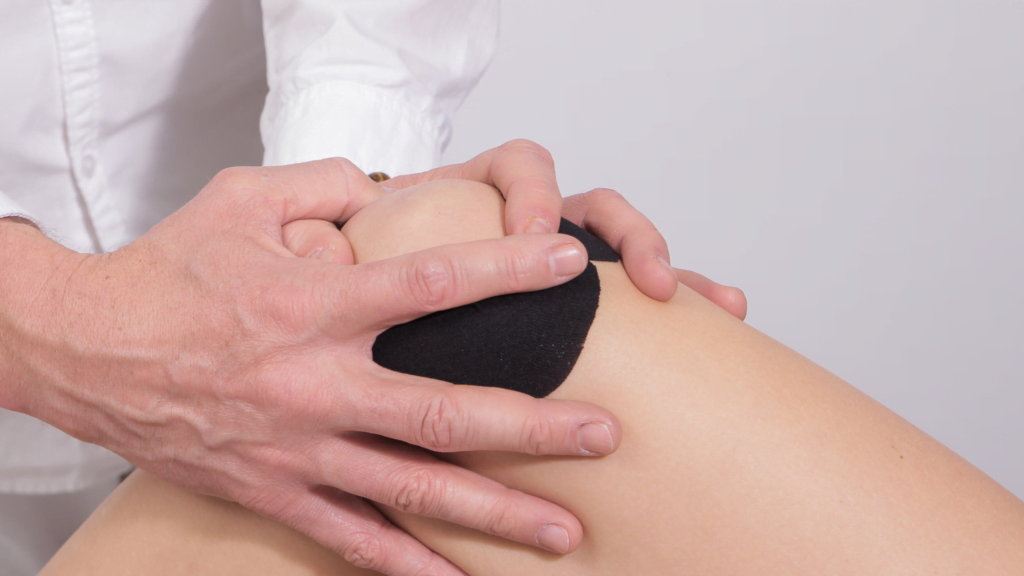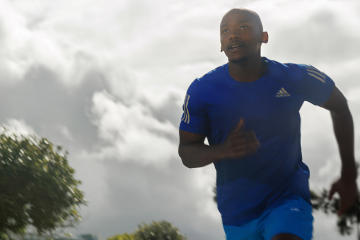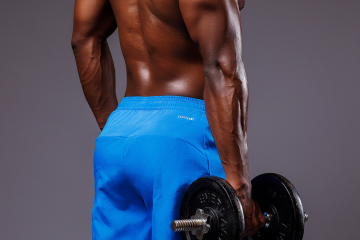A squat was probably one of the first compound exercises (an exercise that works more than one muscle group) I learned when I was younger and have reaped benefits for enjoying it. It can be done with your body weight, which is advisable for younger ages and beginners, but as you get older or more advanced, you can evolve to using weights and other compound leg exercise variations. The reason I am focusing on squats is because they’re beneficial in working the majority of muscles in your legs, especially the big and mirror muscles.
Squat Muscles Worked
Quads – The quadriceps are made up of four muscles that are found on the front of the thigh. When you bend your knee they stretch and the muscles relax, while when you straighten your knee the muscles contract.
Glutes – The butt is made up of three muscles, they work together to give you the shape of your butt. They allow your hips to have power and rotate legs in the required direction at the hips.
Inner Thigh Muscles – The large inner muscle of the thigh that is called the Adductor Magnus, it forms a triangular shape on your inner thigh.
Hamstring Muscles – The hamstrings are made up of three muscles at the back of thigh. When they contract when bending the knee and relax when the knee is straightened, so it basically assists in bending the knee when squatting.
Calf Muscles – There are two muscles at the bottom of your leg above your ankles, one being the bigger evident bumps at calf and the other one being smaller located underneath the big bumps.
Back Muscles – Your back muscles become activated from doing squats, from the upper back and lats to the erectors. They keep your back straight and help you be able to rotate it.
Abdominal Muscles – These are very important when needing the push in some squat rep. This is your stomach area and obliques, I refer to this as your core and that’s why I support doing core after each workout for those days you need that extra push in your workout.
To increase intensity of the exercise use weight, but this will also use more muscles in doing, especially the back and abdominal muscles.
How to Do a Squat
- Stand with feet a little wider than shoulder width with your feet pointing forward. Your foot width and pointing should be comfortable, if you need them a bit wider or pointing slightly outwards, that is perfectly fine.
- Drive your hips back while bending you knees and ankles as you go down like you’ll be sitting on a chair or on the toilet. Try keeping your weight on your heels, without lifting your toes and ensuring your knees don’t bend far ahead of your toes. Head and chest up, with your shoulders back
- Go down until your quads and hamstrings are parallel to the ground. As you can see that I go do down deeper, because I try to activate my muscles more, especially the hamstrings, but you don’t have to do that.
- Pushing off your heels, straighten your legs in a controlled manner and ensure that you do not lock your knees at the top of the movement. Locking your knees is when you get them in a position that can cause a bit of hyperextension, which can be very uncomfortable and lead to injury.
- At the top of the movement, if you want to keep the muscles being worked activated, squeeze your glutes (bum), especially if you want that ass to grow and be firm.
Squat Benefits
- It is actually beneficial to use the squat to lift heavy things off the ground to prevent back issues in future and strengthening your squat can make that a lot easier.
- It is a compound exercise, therefore works multiple muscles at the same time and can be sufficient as workout e.g. 100 squats in a workout or throughout the day.
- They do not require equipment to do them, therefore can be an effective exercise to do wherever you are.
- It is time-efficient in the sense that since it is a compound exercise, you can complete a predominately leg workout only using it.
- Use a body weight squat as a warm-up exercise to prevent injury and activate your lower body muscles, ligaments and tendons for a workout.
Squat Disadvantages

In preventing injury or physical problems in future, as a beginner in doing squats, start with body weight to get the form right first. The issues that can arise:
- Lower back problems
- Damaged ligaments in your legs or ankles
- Damaged lower body muscles
- Hyperextension of the knee
- Paralysis
These go from highly possible to extreme. It is important to acknowledge the importance of proper form and manageable weight, you will be introduced to alternatives and variations once you’ve learned the basics.
Squat Alternatives and Variations
There are leg exercises that work different regions of the leg muscle if you’d require them due to underlying issues or injuries or for more intensity. Here are some alternatives:
- Lunges
- Side Lunges
- Bulgarian Split Squats
- Deadlifts
- Sumo Deadlifts
- Burpee and Squat Hold
- Squat and Kickback
- Squat to Calf Raise
There are many squat alternatives and variations out there on the internet. Here are some workouts, they include squats and/or alternativess of leg exercises to maximize the results. I do mostly full body HIIT workouts as you can see on my Instagram. I love doing time-efficient exercises, while I am studying and working.



0 Comments